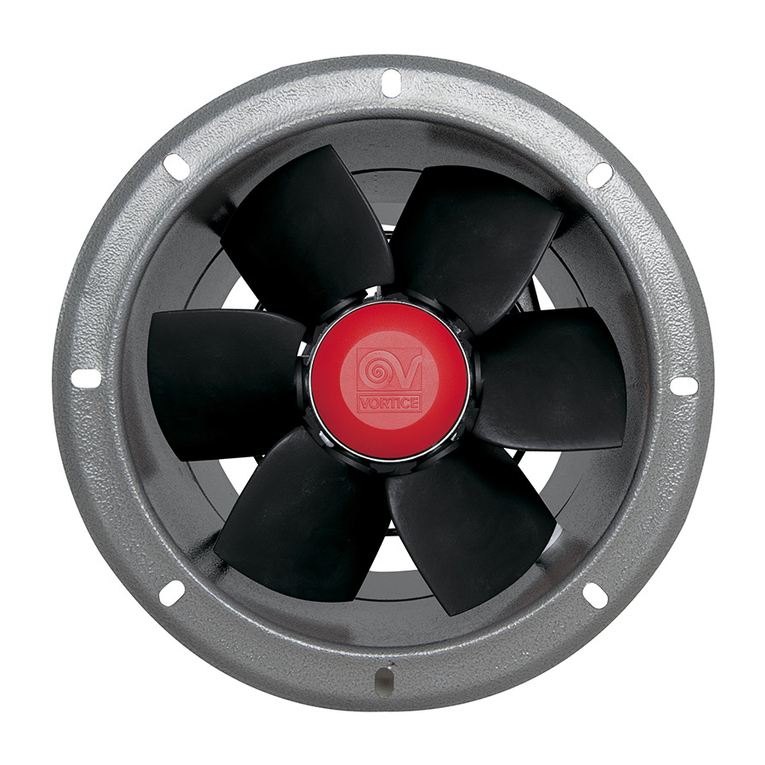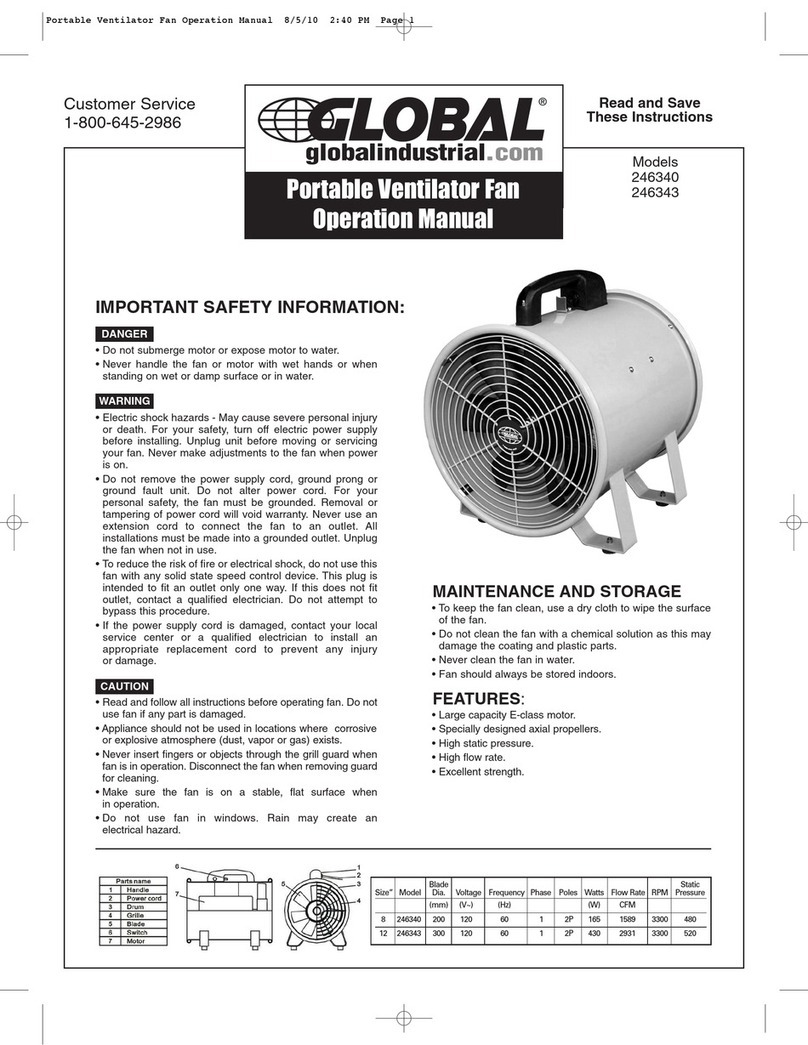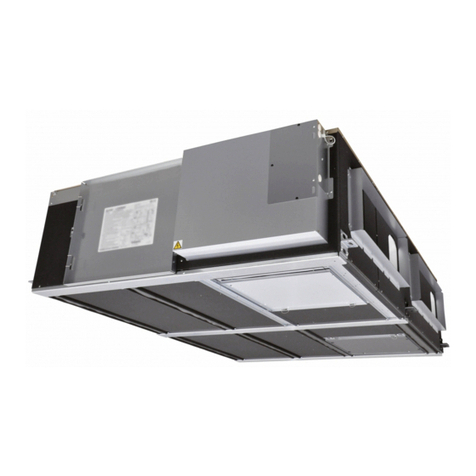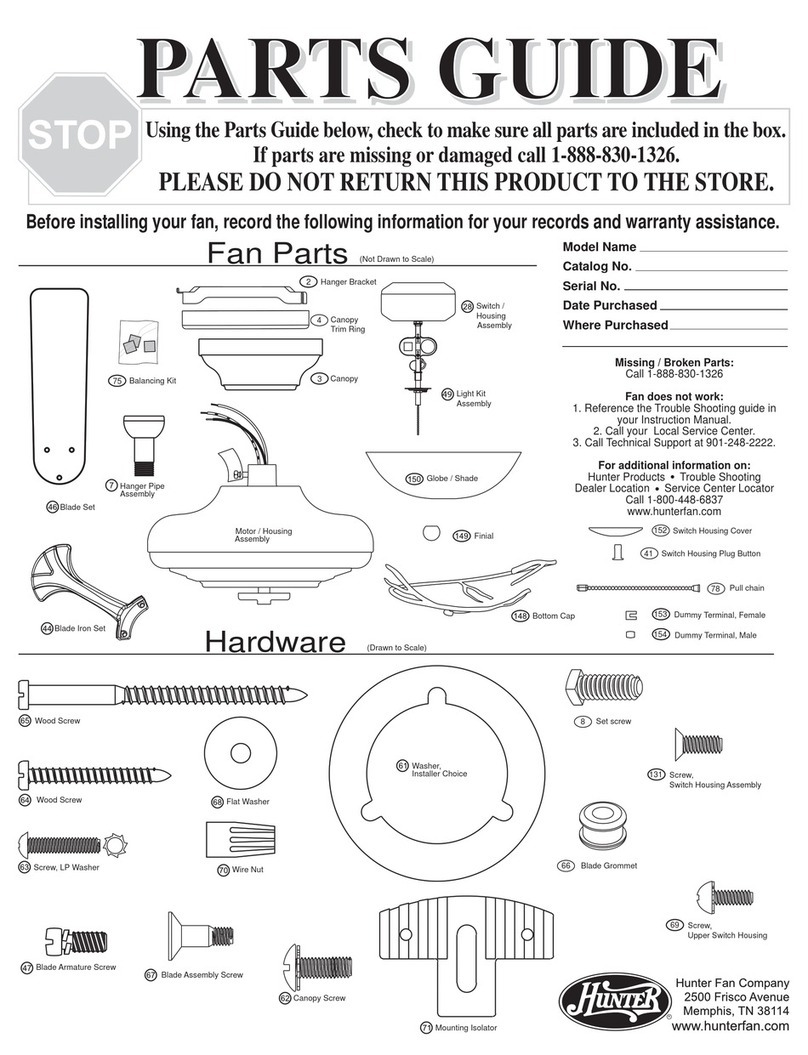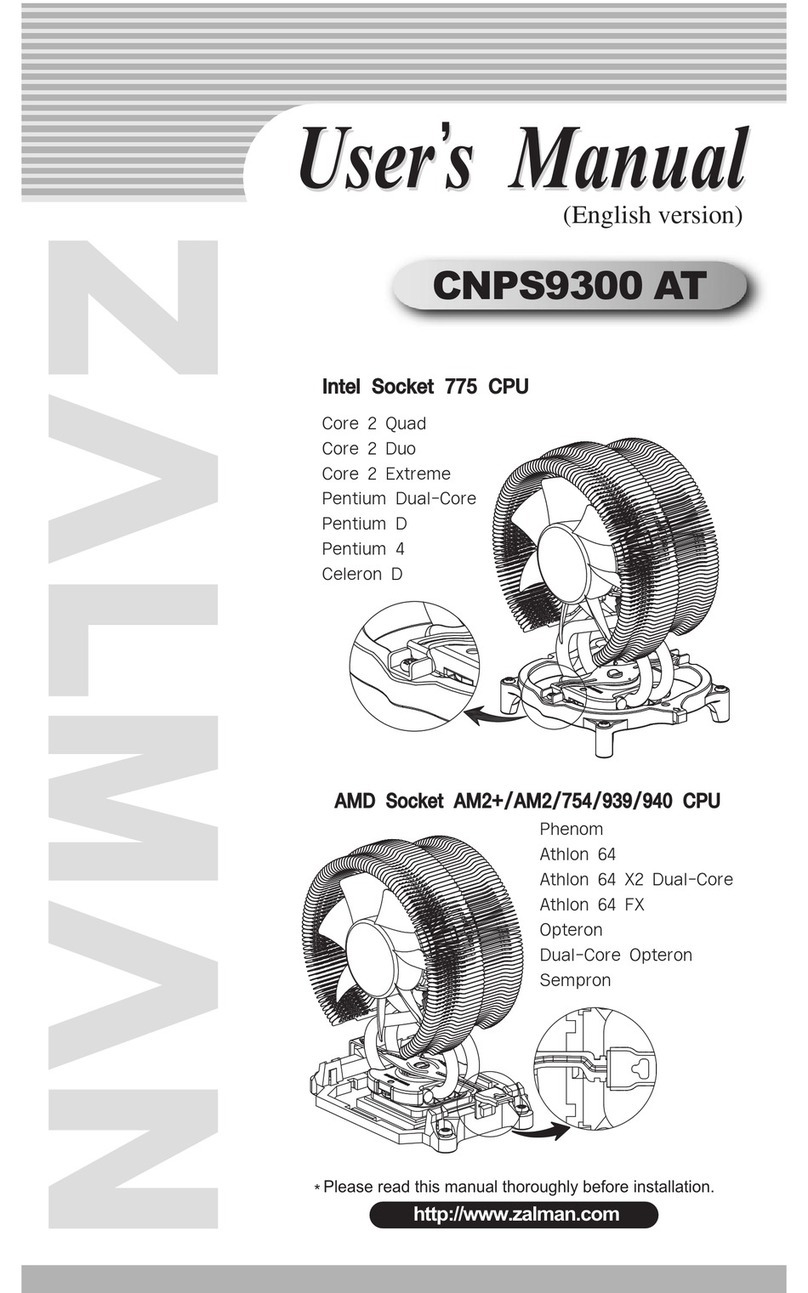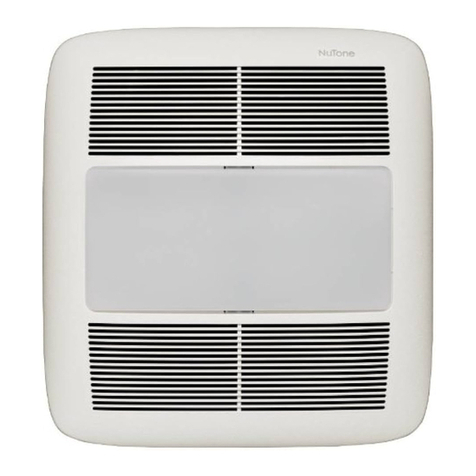NOVENCO FALKINN ACN Instruction Manual

1
Installation and Maintenance
Novax Smoke Exhaust Fan Type ACN Smoke
1. Application
2. Handling
2.1 Marking
2.2 Weight
2.3 Transport
3. Storage
4. Installation
4.1 Prior to attachment
4.2 Attachment
4.3 Mounting brackets
4.4 Duct connection
4.5 Electric connection
5. Start of operation
5.1 Prior to start of operation
5.2 Motors with Y/Δstarting
5.3 Starting procedure
6. Maintenance
6.1 Protection prior to inspection and
maintenance
6.2 Fan casing
6.3 Impeller
6.4 Motor
6.5 Dismounting of motor
6.6 Mounting of motor
6.7 Blade pitch adjustment
6.8 Fault localization
7. Test of operability and
operating condition
7.1 Periodic inspection
8. Sound
9. Attestation of conformity
1. Application
Novax smoke exhaust fans type ACN-
smoke are sturdy axial flow fans de-
signed for both the daily ventilation re-
quirements under normal conditions
and smoke/heat exhaustion in the event
of a fire in all kinds of commercial and in-
dustrial buildings.
Novax smoke exhaust fans type ACN-
smoke are tested and approved to meet
the requirements of fans for smoke ex-
haustion class F300 (300°C for 60 min-
utes) and F400 (400°C for 120 minutes)
according to standard: EN 12101-3.
2. Handling
2.1 Marking
The ACN smoke exhaust fan is provided
with a standard nameplate with Noven-
co's name and address.
It also mentions type/size e. g. ACN
1000/380, number of blades, year of pro-
duction, weight, serial number/order
number (production number). Further-
more, it mentions maximum tempera-
ture and working period in minutes and
if the fan is supplied with approval
number, class/category are also men-
tioned as well as test standard applied
(EN 12101-3). Fan pressure, air quantity,
output and maximum speed per minute.
The fan is also provided with a motor
nameplate with relevant motor data in-
cluding insulation class of the motor.
2.2 Weight
The total weights shown in table 1 apply
to axial flow fan type ACN-smoke. The
total weight is determinedon the basis of
type/size of fan and maximum motor
size employed and is in terms of kg.
2.3 Transport
When transporting the fans take care
that no water (e. g. rainwater) gets into
the motor or other sensitive components.
Novax smoke exhaust fans type ACN-
smoke are delivered on pallets or bearers
to allow fork-lift transport.
The forks of the fork-lift truck must lift
underneath the frame. Set down the fan
as slowly as possible and on a soft foun-
dation. Vibrations, shocks, and fall may
result in imbalance and deformation and
may damage the motor bearings.
MU 14347 0610
918149-0
GB
Table 1. Example of total weights (Fan incl. motor, LOHER 4-pole) [kg]
Type ACN-smoke
Fan size
Motor size
-90 -100 -112 -132 -160 -180 -200 -225 -250 -280
Hub diameters
160, 230, 280, 330 and 380
400 47 57
500 62728095
560 75 85 93 108 185
630 80 90 98 113 190 222
710 93 103 111 126 203 235
800 102 112 120 135 212 244
900 118 128 136 151 228 260
1000 154 164 172 187 264 296
Hub diameters
403
900 170 247
1000 207 284 316
1120 205 220 297 329
1250 222 237 314 346
1400 255 332 364
Hub diameters
578
900 206 283 315
1000 245 322 354 442
1120 257 272 349 381 469 554
1250 307 322 399 431 519 604 689
1400 459 491 579 664 749 899
1600 616 701 786 936
Motor type -90 -100 -112 -132 -160 -180 -200 -225 -250 -280
Motor Weight (kg) 20 30 38 53 130 162 250 335 420 570

2
3. Storage
Novax smoke exhaust fans type ACN-
smoke can stand outdoor storage for 1
month provided the packing is intact.
Fans with no packing must be stored in
a sheltered place.
If the fans are stored indoors under well-
ventilated conditions with no risk of con-
densation the storage period may be ex-
tended to 6 months. The storage place
must not be exposed to vibrations likely
to damage the motor bearings.
If the storage period exceeds 3 months, it
is recommended to turn the impeller re-
gularly by hand.
4. Installation
4.1 Prior to attachment
Prior to attachment make sure that the
impeller rotates freely in the fan casing,
wherever possible with equal distance
between blade tip and fan casing throug-
hout the circumference.
4.2 Attachment
Fans must always be installed so that the
rotating partscannot be touched. The fan
must be provided with a wire guard on
the inlet and outlet sides. If ducts are con-
nected, they should be provided with
wire guards on the inlet side.
The fan is provided with an arrow-plate
denoting the direction of air flow
through the fan casing. See during instal-
lation that the fan is oriented so as to pro-
vide the desired direction of air flow in
the system.
The best way of installing the fan is using
mounting feet (available as optional ex-
tras), but it may also be suspended in the
fan casing flanges or in special carriers.
The carriers must not hamper the free in-
let and outlet of air.
When the fan has been finally secured
make sure that the impeller rotates freely
in the casing.
If the motor is provided with drain holes
for condensed water the fan must be ori-
ented so that the holes turn downwards
(lowest point).
Generally, it is of the utmost importance
for the performance and sound level of
an axial flow fan that the air flow is un-
impeded and free from eddies.
4.3 Mounting feet
Mounting feet for type ACN-smoke con-
sist of two mounting plates (see fig.
1item 01).
Mount two stiffeners (item 02) between
these by means of joining elements (item
03). Stiffeners are only available from fan
size 630 mm inclusive.
To prevent vibrations spreading from the
fan to the surroundings, anti-vibration
mountings may be inserted between fan
and support and flexible connections fit-
ted in the ducts before and after the fan
(available as optional extras).
Secure anti-vibration mountings (fig. 2
ite m 0 6) in the mou nting fe e t by means o f
bolts (item 05).
Mount base plates (item 07) for attach-
ment in the foundation/floor at the bot-
tom of the rubber element.
The natural frequency of the support
must differ at least 20% from the fan
speed.
The anti-vibration mountings serve to
ensure that the natural frequency of the
system does not exceed 10 Hz and that
the damping is at least 80% at 1500 r.p.m.
Figure 1. Mounting foot for type ACN
Figure 2. ACN with mounting foot and antivibration mountings

3
4.4 Duct connection
In order to achieve the capacities stated
on the performance curves the fans must
be provided with ducts as shown in fig.
3 and fig. 4.
The duct or inlet cone on the fan inlet si-
de must be designed to ensure smooth
and undisturbed flow of the air;
ACN-smoke fans are prepared for circu-
lar duct connection on both inlet and out-
let sides.
Flanges supplied as standard
for type ACN comply with EUROVENT
1/2.
Systems with higher vibration level or
more exacting performance require-
ments must be provided with expansion
joints between fan and duct, and ducts
must not be supported by the fan.
It is important to allow for free areas to
facilitate mounting and dismounting as
well as ordinary maintenance.
4.5 Electric connection
Connection to the mains is made accord-
ing to current legislation and by author-
ized personnel.
Connection to the mains is effected direct
in the motor terminal box or in the termi-
nal box mounted on the outside of the
fan casing (see fig. 6). Connection is
made according to connection diagram
on the inside of the terminal box cover.
Having wired the motor terminal box,
check that the direction of rotation of the
impeller complies with the arrow-plate
fitted on the outside of the fan.
5. Start of operation
5.1 Prior to start of operation
Approval (prior to start of operation).
After installation of the axial flow fans
their correct installation, operation and
interaction must be established through
an approval test.
The person responsible for the operation
of the system must take the initiative for
this test.
The approval test must be confirmed by
the person responsible for the operation
of the system and the documentation
must be kept and produced whenever
asked for.
Prior to start of operation check that the
fan and duct connections are clean and
free from tools and foreign substances.
Also check that the electric connections
meet the prescribed requirements, that
any wire guard fitted on the fan inlet or
outlet side is correctly mounted and that
the direction of rotation of the fan com-
plies with the arrow-plate (check by
short-time operation).
5.2 Motors with Y/Δstarting
The relay must be set to the calculated ti-
me.
5.3 Starting procedure
•Startthefan
• Check that no abnormal noises occur.
• See that the vibration level is normal.
The vibration level at the fan operat-
ing speed must not exceed 7 mm/s
rms, measured radially at 2 points, 90º
offset and at the free shaft end of the
motor. Otherwise, the fan must be bal-
anced. Operation at a higher vibration
level exceeding 11 mm/ s rms* is not
allowed in case of fixed fan position.
Operation at a higher vibration level
exceeding 18 mm/s rms* is not al-
lowed in case of position on feet or an-
ti-vibration mountings.
• After 30 minutes of operation check
that the fan operates normally.
* ISO 2954, Requirements for instru-
ments for measuring vibration sever-
ity.
6. Maintenance
6.1 Protection prior to inspection
and maintenance
When the fan is out of operation for rea-
sons of inspection or repair/maintenan-
ce, the electric system must be switched
off and protected so that the fan is not cut
in unintentionally.
6.2 Fan casing
The fan casing requires no maintenance
other than ordinary cleaning.
If the fan casing is painted, the painted
surface should be checked regularly and
repaired where necessary.
Figure 3. Installation in duct system
Figure 4. Inlet cone for connection to duct

4
6.3 Impeller
From the factory the impeller is supplied
with the blades adjusted to the pitch cor-
responding to the desired operating
point (pressure and air flow) at the fan
speed in question. To ensure vibration
free operation the impeller has been
carefully balanced in this position.
Vibrations occurring during operation
will normally be due to accumulations of
dust or dirt on the hub and blades, and
will disappear after cleaning. Should this
not be the case, expert assistance should
be called in immediately, as continued
vibrations will shorten the life of the mo-
tor bearings.
6.4 Motor
The motor normally only requires main-
tenance of the bearings as indicated in
the maintenance instructions for electric
motors.
6.5 Dismounting of motor for
types
ACN-smoke (see fig. 5)
Prior to commencing the work, switch
off the current and disconnect the motor
cable. Next, dismount any ducts on the
fan inlet and outlet sides. Remove the
impeller centre screw (see item 01), cen-
tre disc (see item 02) and hub cover (see
item 03).
Dismount the impeller by means of a
puller fastened in the 2 threaded holes of
the hub boss/threaded holes for puller
(see item 05).
Detach the motor by loosening the
screws in the motor shell (see item 06).
Now the motor (see item 11) and motor
flange (see item 10) can be removed.
In dismounting and disassembling the
fan be careful not to expose the individu-
al parts to shocks etc. likely to damage
the motor bearings or other fan compo-
nents.
6.6 Mounting of motor for types
ACN-smoke (see fig. 5)
After servicing remount the motor, take
care that the motor flange (item 10) is cor-
rectly located and that the motor shaft is
concentrically placed in the fan casing
before tightening the bolts (item 06).
Mount the impeller (item 04) on the mo-
tor shaft by means of a tool fastened in
the threaded hole of the motor shaft.
Fix the impeller hub to rest against the
motor shaft collar.
Check that the blade clearance of the im-
peller is the same throughout the circum-
ference of the casing. If that is not the
case, adjust the motor location in the sus-
pension arrangement.
Now mount centre screw (item 01), cen-
tre disc (item 02), and hub cover (item
03). Replace lock washers/lock nuts dur-
ing fan assembly. Finally connect motor
cable (item 13) in terminal box (item 12)
and ducts, if any.
To start the fan follow the procedure de-
scribed in section 5. Start of operation.
6.7 Blade pitch adjustment
The blade pitch has been adjusted in the
factory with a special tool (mounting fix-
ture) to deliver the performance required
by the customer/order on delivery.
If the fan performance is required to be
changed it is possible to change the blade
pitch. It requires knowledge of the motor
load and the max. permissible blade
pitch on the graph as related to the motor
rating (in case of blade pitch increase).
Contact Novenco before any such ad-
justment of the blade pitch. Novenco can
supply special tools for blade pitch ad-
justment and instructions for impeller
balancing. The brochure “Blade Angle
Tool” is available on request.
Figure 5. Dismounting/mounting of axial flow fan

5
6.8 Fault localization
These are likely causes of breakdowns/
failures:
Deficiency in performance:
•Blocked air supply to the fan inlet side:
– Damper closed
– Duct choked
– Supply fan, if any, stopped
– Motor defective
– Motor disconnected
• Wrong direction of rotation of impel-
ler
Noise/vibrations:
• Bearings in electric motor defective
• Impeller out of balance
• Impeller worn/damaged
• Bolts/components loose
• Impeller blades have different pitch
angles
• Fan operates in the stalling area. May
result in breakdown. Repair failures,
see “Deficiency in performance”.
7. Test of operability and
operating condition
ACN-smoke approved for smoke con-
trol must be tested four times a year as to
operability and operating condition.
If smoke exhaust fans type ACN-smoke
are used for standard ventilation as well,
a test every six months is sufficient if the
regular starts of the fans ensure at least
one start a day - as a result of connection
to a time switch or carbon monoxide
alarm.
7.1 Periodic inspection
Novax smoke exhaust fans must always
be kept in operational and perfect condi-
tion by the user. The fans should be in-
spected twice a year to ensure a satisfac-
tory function and long life.
The inspection must include:
• Measuring of power consumption
•Measuringofvibrations on fan casing
• Check of torque for fixing bolts and –
correction of it, if necessary.
• Visual inspection of impeller, fan cas-
ing, and connection to the electricity
supply
•Cleaning:
– inside with pressure air
– outside with water
It is recommended to enter all values and
observations in a log.
8. Sound
The sound generation of the fans de-
pends on installation and operating con-
ditions, which means that no general da-
ta of the sound generation can be given.
Reference is made to our catalogues or
computer programs for calculation of
the specific sound generation.
9. Attestation of conform-
ity
EU – Attestation of Conformity
The Machinery Directive 2006/42/EC,
part 2, A
Novenco A/S
Industrivej 22
DK-4700 Naestved
Hereby declares that axial flow fans type
ACN-smoke 400-1600 have been manu-
factured in conformity with the Coun-
cil's directives
2006/42/EC regarding mutual approxi-
mation of the machinery laws (the Ma-
chinery Directive) of the member states.
Applied standards:
EN ISO 12100-1: Safety of machinery
part 1
EN ISO 12100-2: Safety of machinery
part 2
EN ISO 13857: Safety of machinery -
Safety distances
EN 12101-3: Smoke and heat control
systems - Part 3, class 1
EN 60204-1: Safety of machinery -
Electrical equipment of
machines Part 1:
General Requirements
It is a condition that Novenco's instruc-
tions for installation have been followed.
Naestved, 01.06.2010
Steen Hansen
R&D Manager
Novenco A/S
Figure 6. Electric connection through fan casing to external terminal box
External terminal boxExternal terminal box
Electric cable/Electric cable/
Flexible metallic conduitFlexible metallic conduit
MetalMetal
cable glandcable gland
(relief)(relief)
NutNut
Novenco A/S
Industrivej 22 Tel. (+45) 70 12 42 22
DK-4700 Naestved Fax (+45) 55 75 65 50
Denmark www.novencogroup.com
Table of contents
Other NOVENCO Fan manuals

NOVENCO
NOVENCO Novax ACP Series Instruction Manual

NOVENCO
NOVENCO AUO 290 Instruction Manual
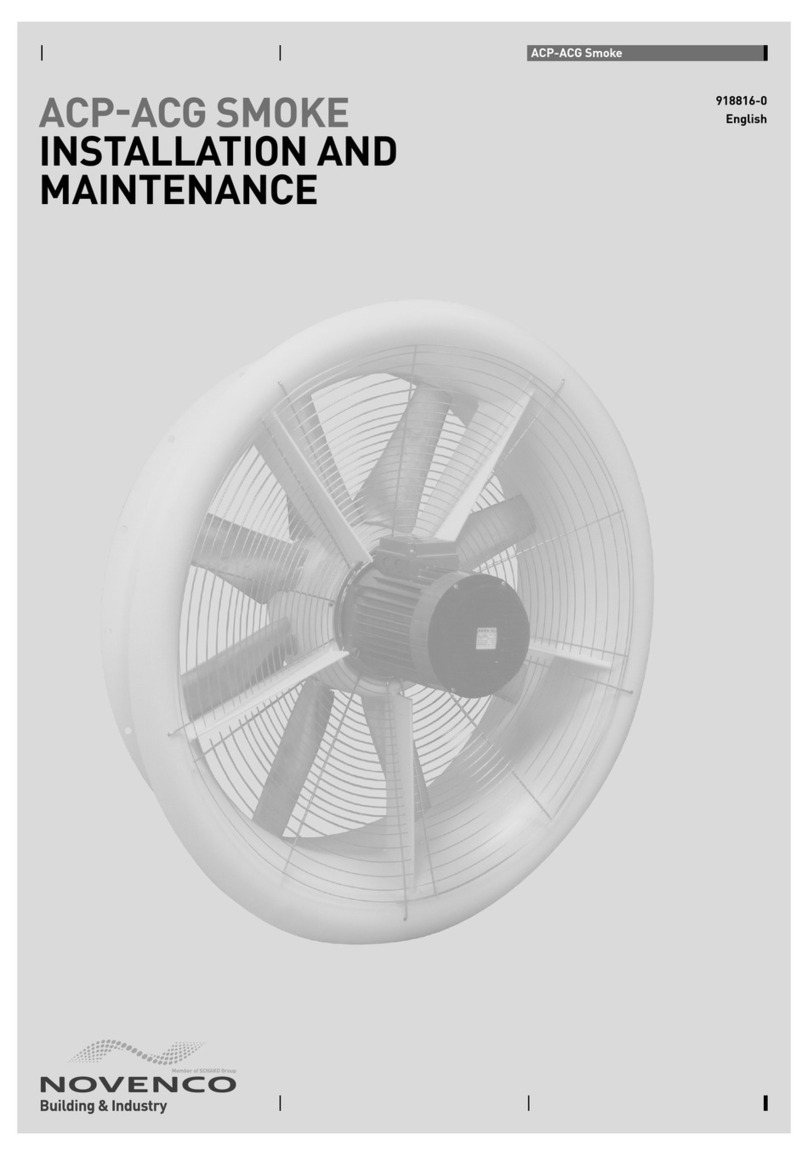
NOVENCO
NOVENCO ACP Series Instruction Manual

NOVENCO
NOVENCO NOVAX ACN-ACW-ARN Instruction Manual

NOVENCO
NOVENCO CNA Series Instruction Manual

NOVENCO
NOVENCO Novax Instruction Manual
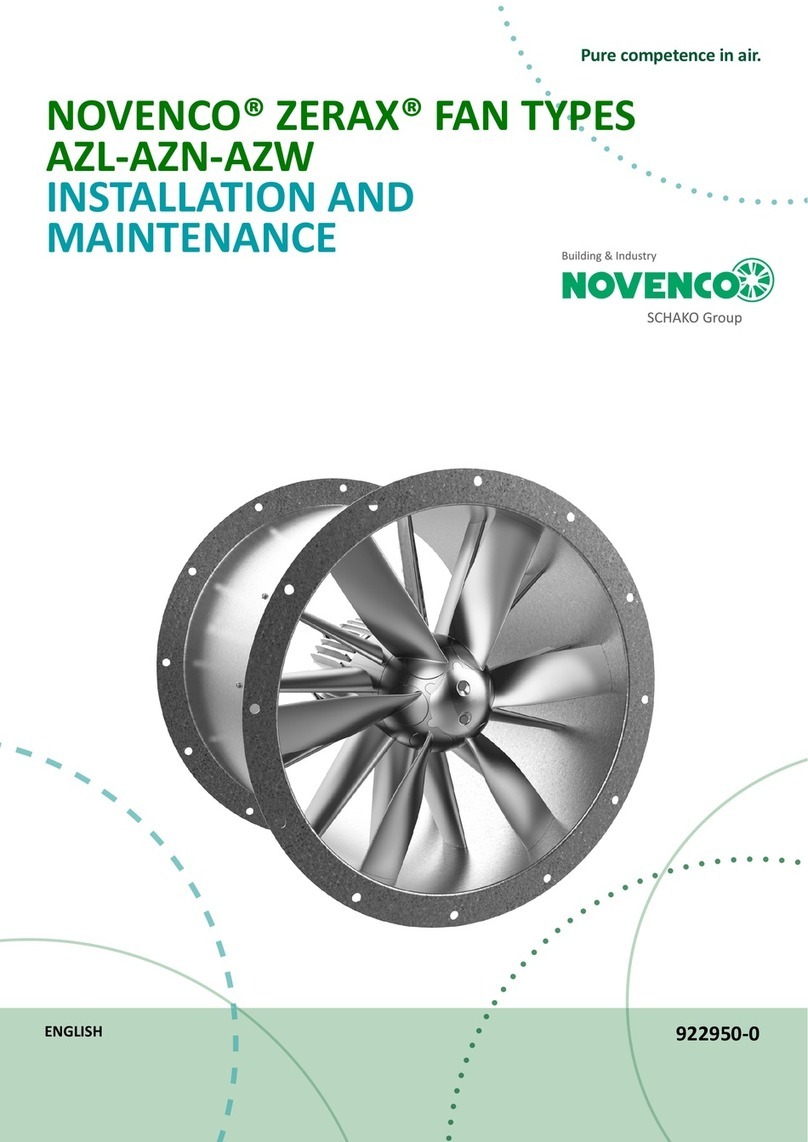
NOVENCO
NOVENCO ZERAX AZL-AZN-AZW Instruction Manual
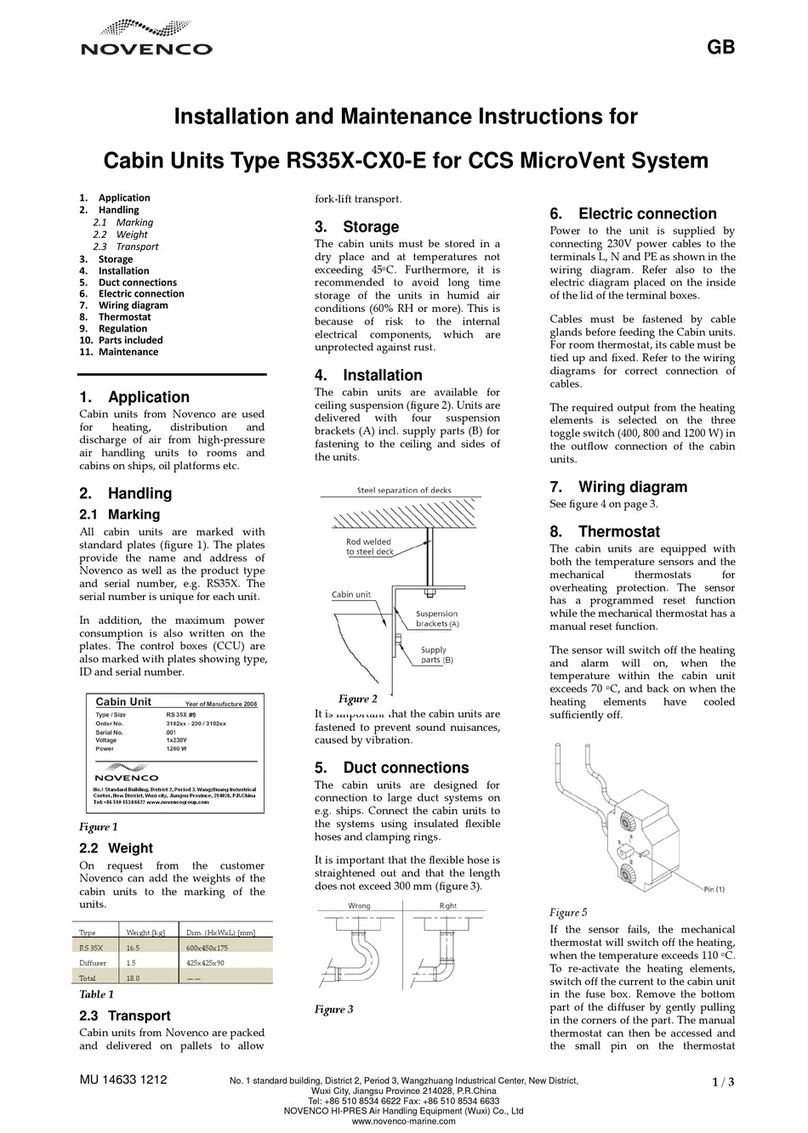
NOVENCO
NOVENCO RS35x-CX0-E series User manual
Popular Fan manuals by other brands
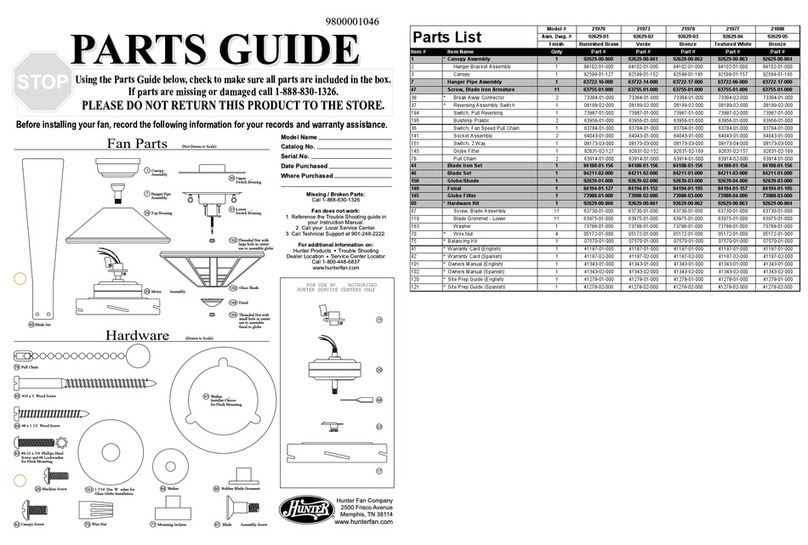
Hunter
Hunter 21978 Parts guide

Termozeta
Termozeta BASSOTTO XL instruction manual

Progress Lighting
Progress Lighting AirPro P250102 installation manual
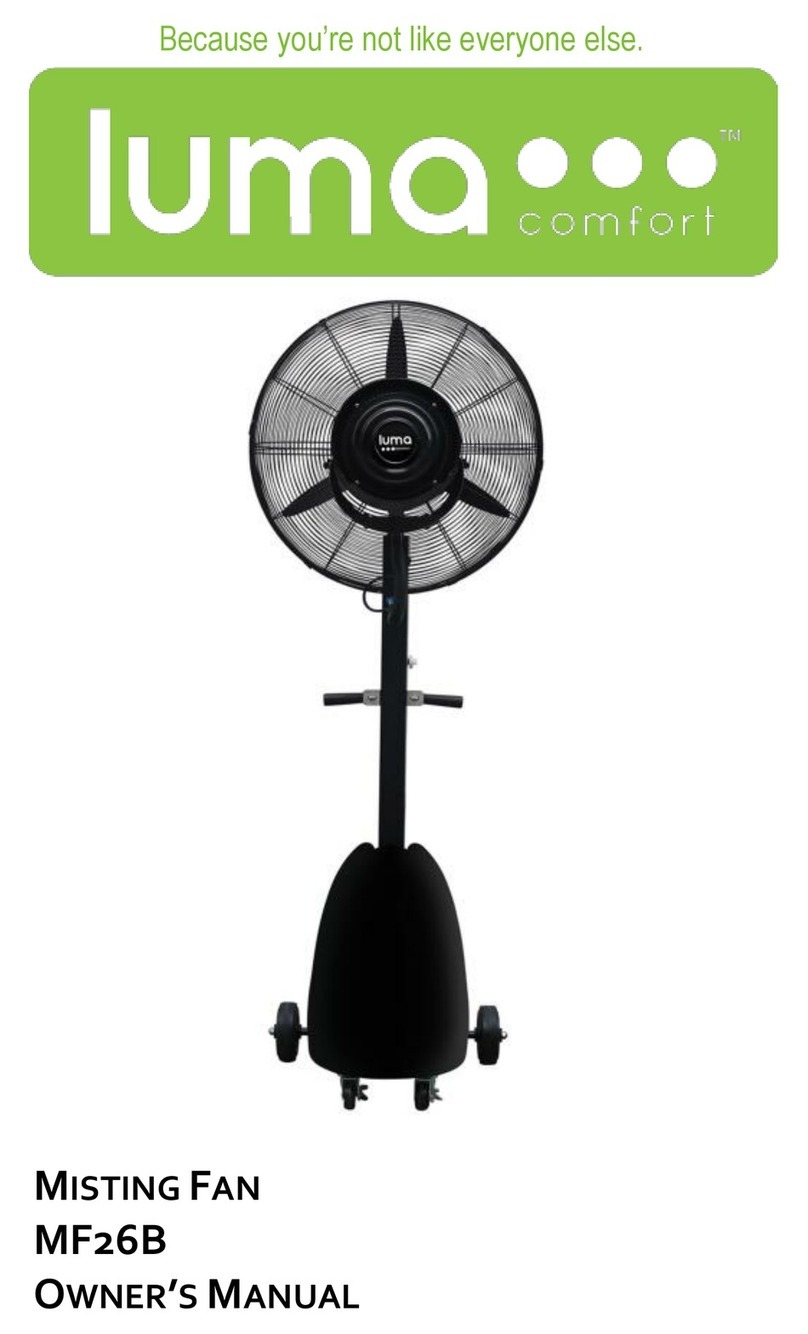
Luma
Luma Comfort MF26B owner's manual
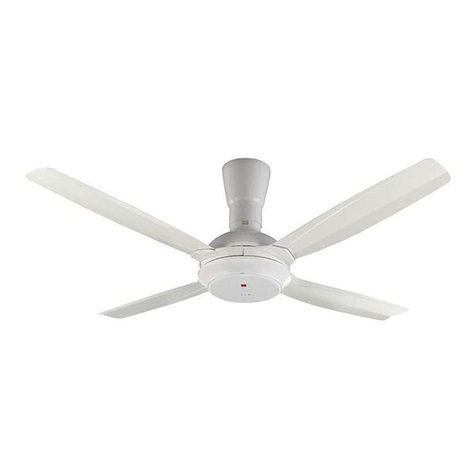
KDK
KDK K14X5 Operating and installation instructions
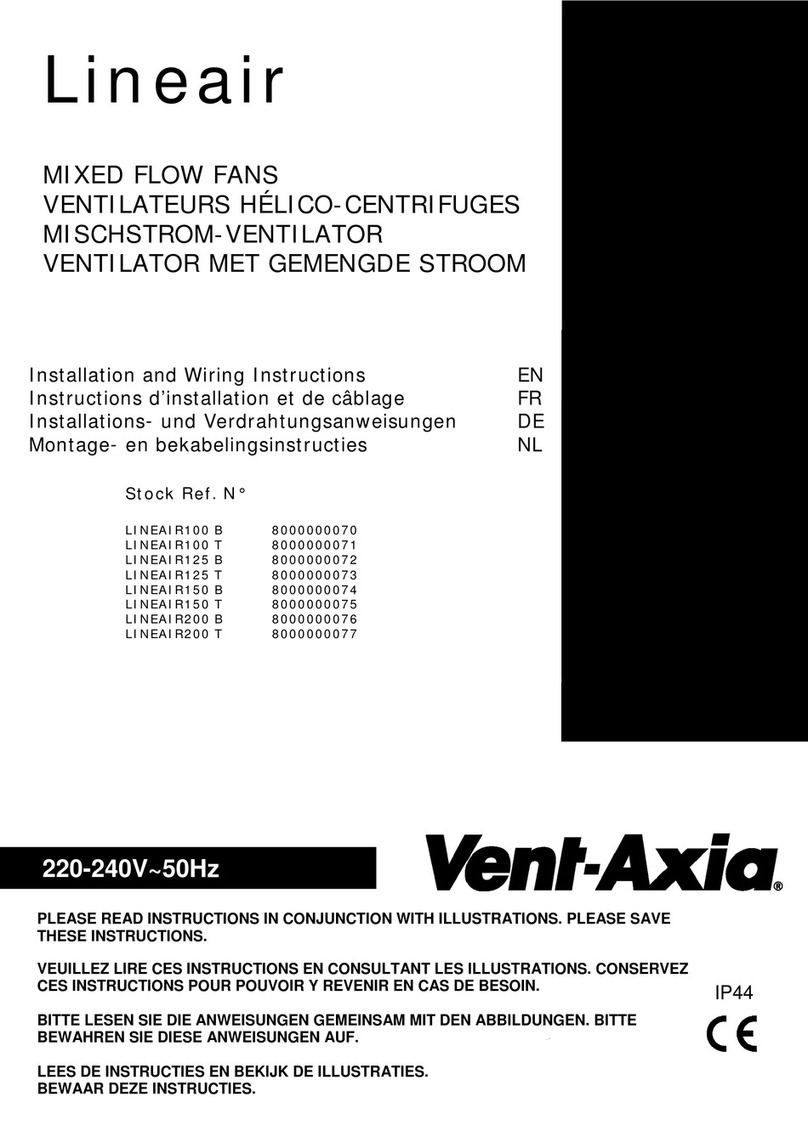
Vent-Axia
Vent-Axia Lineair LINEAIR100 B Installation and wiring instructions

